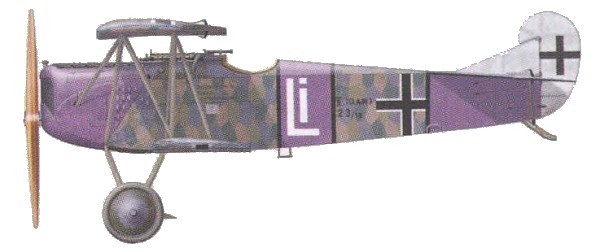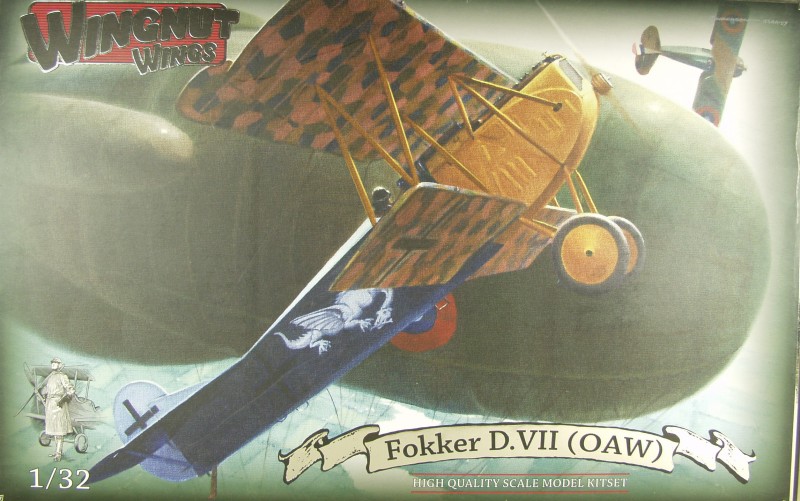Fokker D.VII

The Fokker D.VII is widely considered to be the best German fighter to emerge from the Great War. It was certainly the most numerous and as such was the only aircraft requested to be surrendered in the Allies armistice terms. So great was the demand for the promising new fighter that, in addition to production at Fokker, Albatros were ordered to manufacture it under license at their Johannisthal (Alb) and Schneidemuhl (OAW- Ostdeutsche Albatros Werke) factories which ended up building almost twice as many as Fokker. The D.VII featured a welded steel tube fuselage and tailplane along with a thick high lift wings of conventional wood and wire construction. They were powered by various versions of the Daimler-Mercedes D.III engine of horse powers ranging from 160hp to 230hp. In the middle of 1918 it was plagued with a series of often fatal mid air fires variously attributed to over heating, fuel tank stress damage and the volatile incendiary ammunition used for balloon busting. An immediate fix for this was removing the top cowlings for improved engine cooling followed by the modified side cowlings with louvers to ventilate the engine bay. Following the Armistice the D.VII found its way into numerous countries air forces including Argentina, Belgium, Bulgaria, Czechoslovakia, Denmark, Finland, Hungary, Netherlands, Lithuania, Poland, Romania, Soviet Union, Sweden, Switzerland and the American USAS an USMC.
The D.VII specificatios are as follows;
Wingspan 28.54'
Length 22.8'
Max speed 124 mph
Total number built by OAW 1,100 (total by all manufacturers 3,380)
Armament 2 7.92mm Spandau machine guns
The Kit

While most of the kits in the WNW series can be built out of the box to an excellent level of detail there seems to always be some after market items to enhance things. Many of them are for the engines which are small kits in and of themselves but they can be enhanced with wiring, spark plugs and valve springs. I have not given in to any of this yet and probably won't until I start building and find I have the desire to do some enhancement.
In this case I did opt for a photo etch set of radiator grills made by RB Productions (RB-P32031) Radiator grills molded from plastic rarely are capable of capturing the look of real radiators and these do. The set provides 6 different styles to match those on the particular aircraft you are modeling and I think they are worth while for improving the look of the kit and are highly recommended.
Links to kit build or reviews
An in box review here highlights the differences between the OAW and Fokker versions with links to the Fokker review and a build review here
Back to
the WWI page